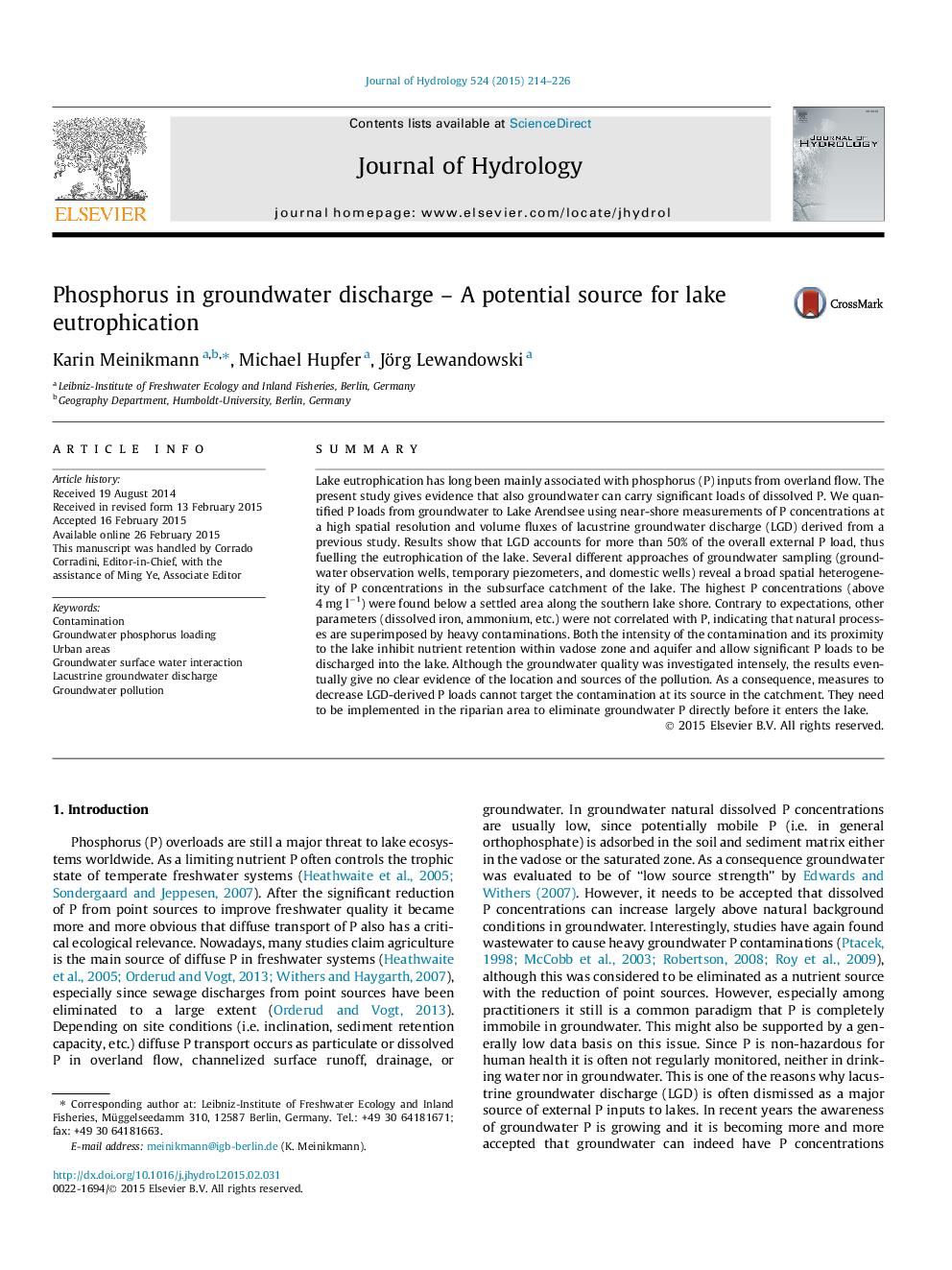| Article ID | Journal | Published Year | Pages | File Type |
|---|---|---|---|---|
| 6411407 | Journal of Hydrology | 2015 | 13 Pages |
â¢Phosphorus loads entering a eutrophic lake with groundwater discharge are quantified.â¢Groundwater accounts for >50% of overall external P loads.â¢Groundwater drives ongoing eutrophication of the lake.â¢High groundwater P concentrations were exclusively found in urban groundwater.â¢P concentrations do not correlate with other parameters.
SummaryLake eutrophication has long been mainly associated with phosphorus (P) inputs from overland flow. The present study gives evidence that also groundwater can carry significant loads of dissolved P. We quantified P loads from groundwater to Lake Arendsee using near-shore measurements of P concentrations at a high spatial resolution and volume fluxes of lacustrine groundwater discharge (LGD) derived from a previous study. Results show that LGD accounts for more than 50% of the overall external P load, thus fuelling the eutrophication of the lake. Several different approaches of groundwater sampling (groundwater observation wells, temporary piezometers, and domestic wells) reveal a broad spatial heterogeneity of P concentrations in the subsurface catchment of the lake. The highest P concentrations (above 4 mg lâ1) were found below a settled area along the southern lake shore. Contrary to expectations, other parameters (dissolved iron, ammonium, etc.) were not correlated with P, indicating that natural processes are superimposed by heavy contaminations. Both the intensity of the contamination and its proximity to the lake inhibit nutrient retention within vadose zone and aquifer and allow significant P loads to be discharged into the lake. Although the groundwater quality was investigated intensely, the results eventually give no clear evidence of the location and sources of the pollution. As a consequence, measures to decrease LGD-derived P loads cannot target the contamination at its source in the catchment. They need to be implemented in the riparian area to eliminate groundwater P directly before it enters the lake.
